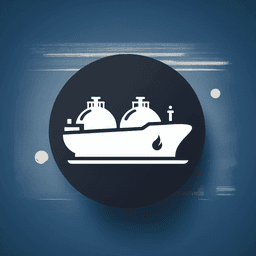
LNG Carrier: Definition, Functionality, and Examples
February 27, 2025
LNG Carrier
An LNG (Liquefied Natural Gas) Carrier is a specialized ship designed for transporting liquefied natural gas. These vessels are crucial in the global energy supply chain, enabling the movement of natural gas from production sites to markets where it is in demand.
Design and Features
LNG carriers are distinct due to their containment systems, which are designed to keep the natural gas in its liquid state at extremely low temperatures (around -162°C). The most common containment systems are the Moss-type spherical tanks and the membrane-type tanks, each offering unique advantages in terms of capacity and safety.
Operational Considerations
Operating an LNG carrier requires specialized knowledge and skills. Mariners must be familiar with the handling of cryogenic materials and the specific safety protocols associated with LNG transport. The crew is trained to manage the boil-off gas, which is natural gas that evaporates during transit and can be used as fuel for the ship's engines.
Safety and Regulations
Safety is paramount in LNG shipping. International regulations, such as those from the International Maritime Organization (IMO), govern the construction and operation of LNG carriers to ensure safe and environmentally responsible transport. These regulations cover aspects such as ship design, crew training, and emergency response procedures.
Environmental Impact
LNG is considered a cleaner alternative to other fossil fuels, and its transportation by sea is generally efficient. However, LNG carriers must adhere to strict environmental standards to minimize their impact, including measures to prevent spills and reduce emissions.
Technological Advancements
Recent advancements in technology have led to the development of more efficient and environmentally friendly LNG carriers. Innovations include improved hull designs, more efficient propulsion systems, and enhanced containment technologies that reduce boil-off rates.
Overall, LNG carriers play a vital role in the maritime industry, facilitating the global distribution of natural gas and contributing to energy security worldwide.
LNG Carrier: Key Insights for Maritime Users
What is an LNG Carrier?
An LNG carrier is a specialized ship designed for the transportation of liquefied natural gas (LNG). These vessels are equipped with advanced containment systems to safely carry LNG, which is natural gas cooled to a liquid state at approximately -162°C. The global fleet consists of around 360 such vessels, each playing a crucial role in the energy supply chain.
What is LNG in Maritime?
In the maritime context, LNG refers to liquefied natural gas transported by sea. LNG carriers are specifically designed to handle the unique properties of LNG, ensuring safe and efficient transport. These ships are integral to the global energy market, facilitating the movement of natural gas from production sites to consumption areas worldwide.
What is the Difference Between LPG Carrier and LNG Carrier?
While both LPG (Liquefied Petroleum Gas) and LNG carriers transport liquefied gases, they differ in design and cargo. LNG carriers are built to transport natural gas in its liquid form, requiring containment systems that can handle extremely low temperatures. In contrast, LPG carriers transport gases like propane and butane, which have higher freezing points and require different containment solutions.
Does MARPOL Apply to LNG Carriers?
Yes, MARPOL regulations apply to LNG carriers. These international regulations aim to prevent pollution from ships, including those carrying liquefied gases. Recent amendments to MARPOL Annex VI have strengthened energy efficiency requirements for gas carriers, including LNG vessels, to reduce their environmental impact.
Conclusion
LNG carriers are a vital component of the maritime industry, enabling the global distribution of natural gas. Understanding their operation, regulatory requirements, and differences from other gas carriers is essential for maritime professionals involved in LNG transportation.




